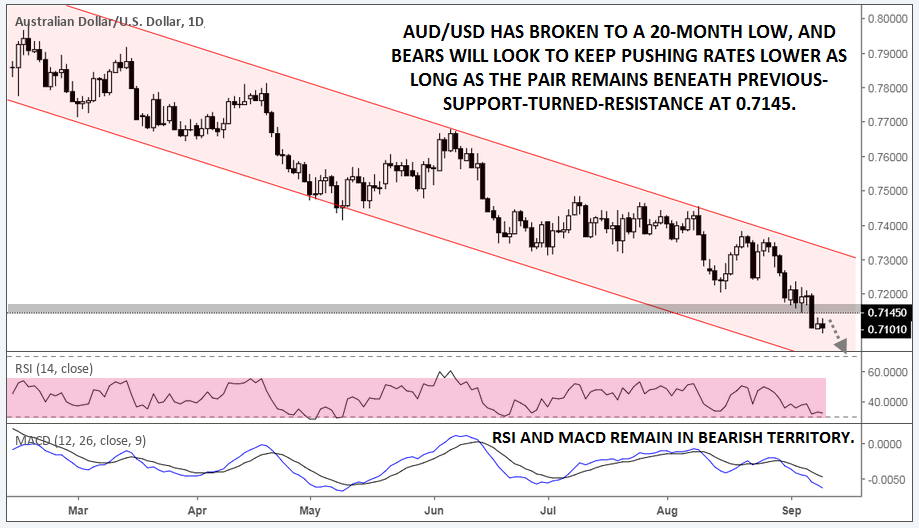Two weeks ago, we noted that AUD/USD was testing a 20-month low on a “perfect storm” of bearish news. With trade and geopolitical tensions still running high, concerns about mortgage rates and metal prices remaining elevated and bond yields continuing to fall, the fundamental outlook for the Australian economy is little changed.
Technically speaking, the outlook has, if anything, worsened further. After consolidating around the 0.7200 handle for most of last week, the bottom dropped out on Friday, taking the pair to its lowest level since early March 2016. So far this week, rates have held below previous support at 0.7145, increasing the likelihood that the breakdown is legitimate.
Looking at the secondary indicators, there’s little to suggest that AUD/USD is at a significant bottom yet. For its part, the RSI indicator remains locked in a bearish range, consistently topping out around the 55 level, far from the “70” level that indicates bullish momentum. Moreover, the RSI has hit a new low along with price, eliminating the possibility of a divergence forming in the near term. Meanwhile, the MACD indicator continues to trend lower beneath both its signal line and the “0” level, showing strong bearish momentum.
Data Watch
With little in the way of support nearby, bulls will have to pin their hopes on economic data. The US is set to release its Producer Price Index (PPI) reading for August on Wednesday, with Australian jobs data and the US Consumer Price Index (CPI) to follow on Thursday, followed by US retail sales on Friday. While any of these reports could lead to a short-term bounce in Aussie, the dominant technical trend remains to the downside, so traders may look to sell any near-term rallies in the pair unless rates can get a foothold back above 0.7145 (and ultimately, the top of the well-defined bearish channel near 0.7300).

Source: TradingView, FOREX.com
Cheers
